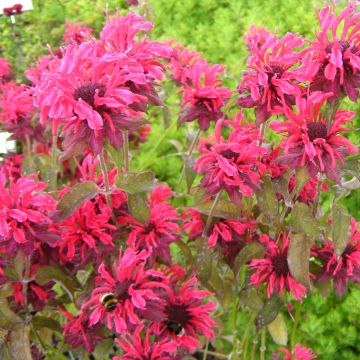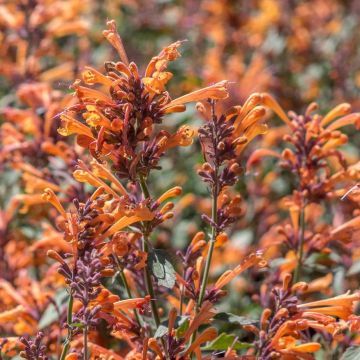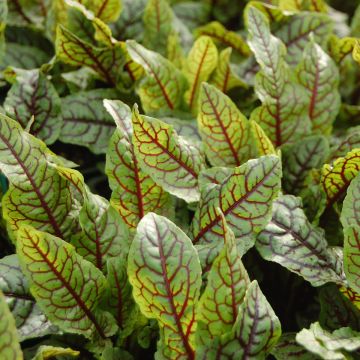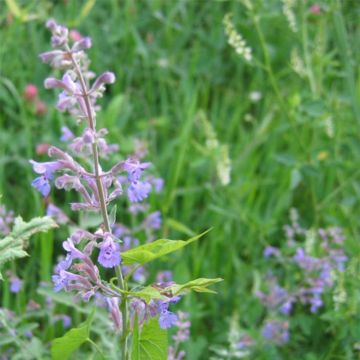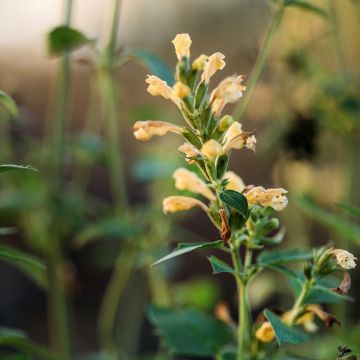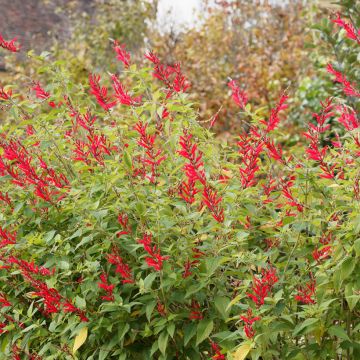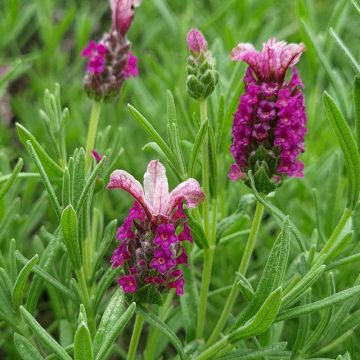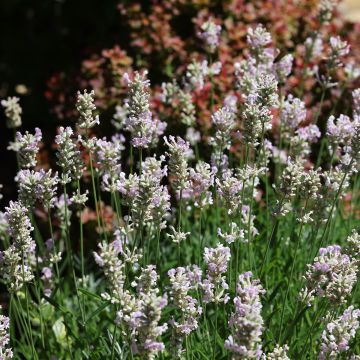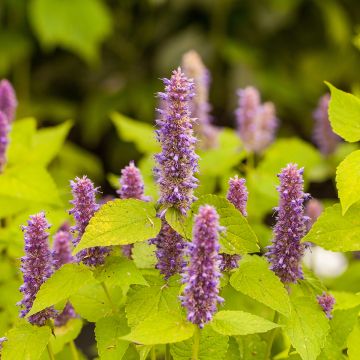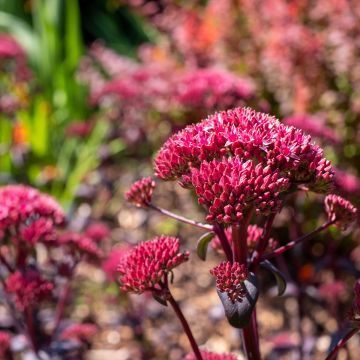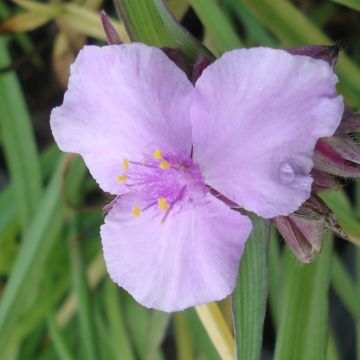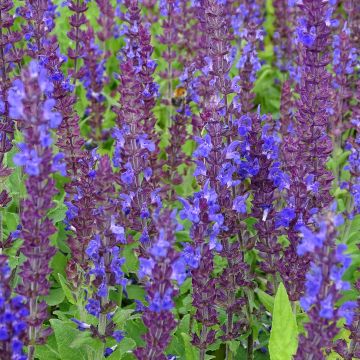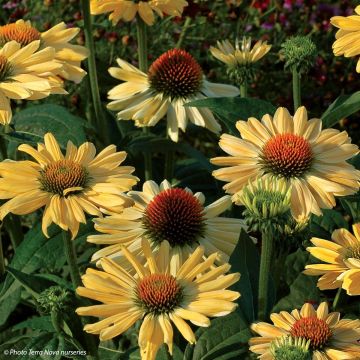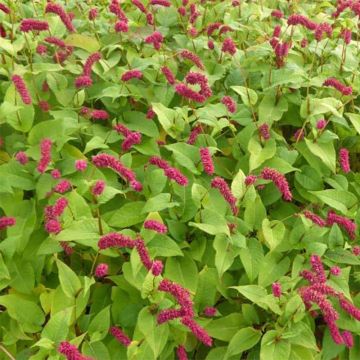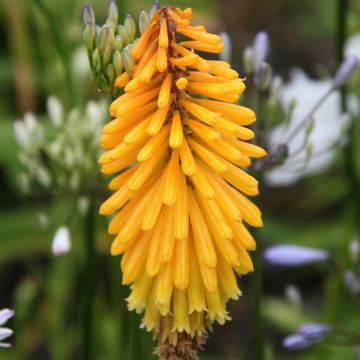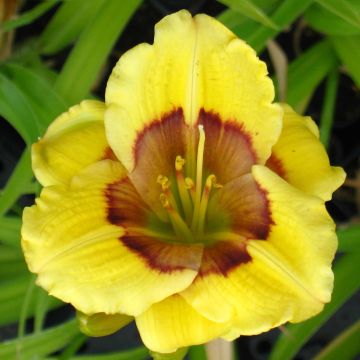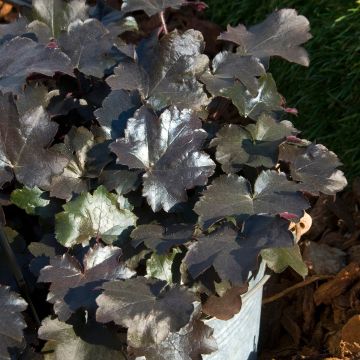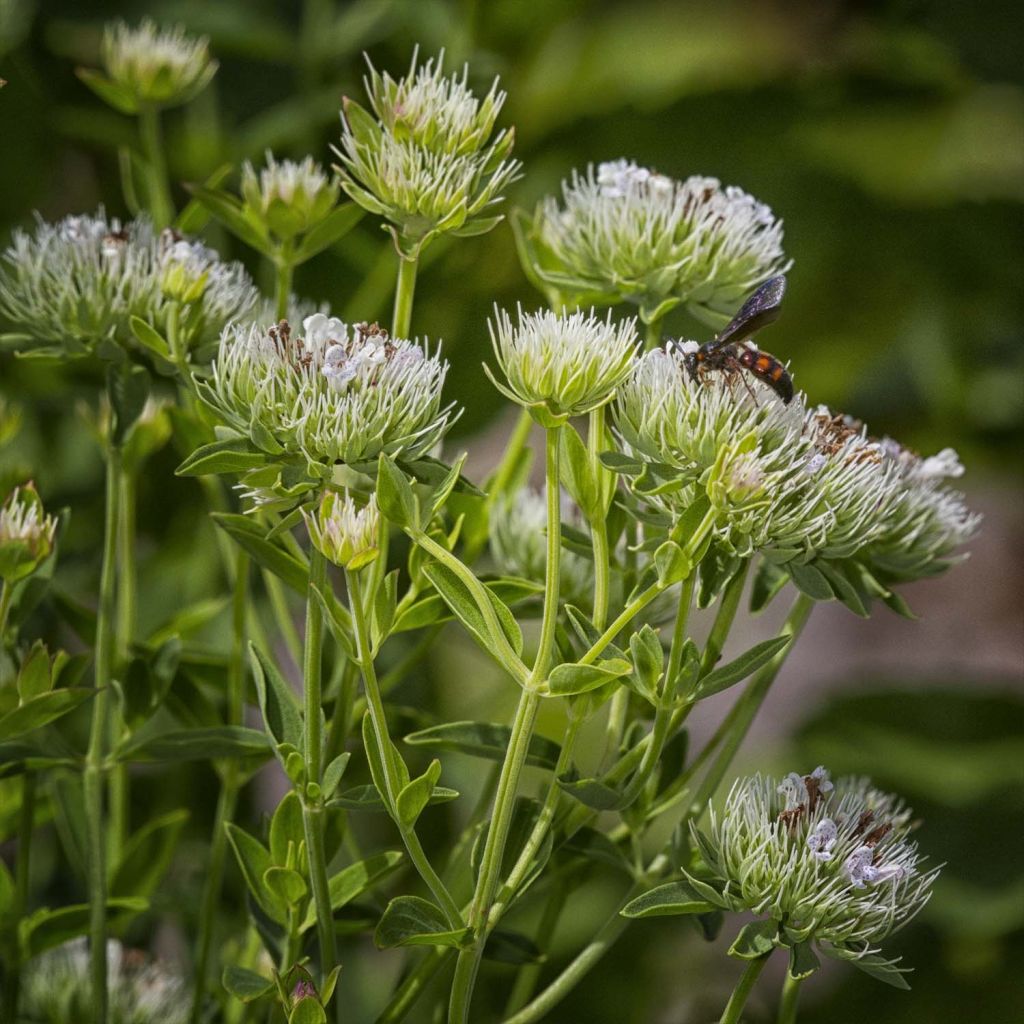

Pycnanthemum flexuosum - Menthe des montagnes
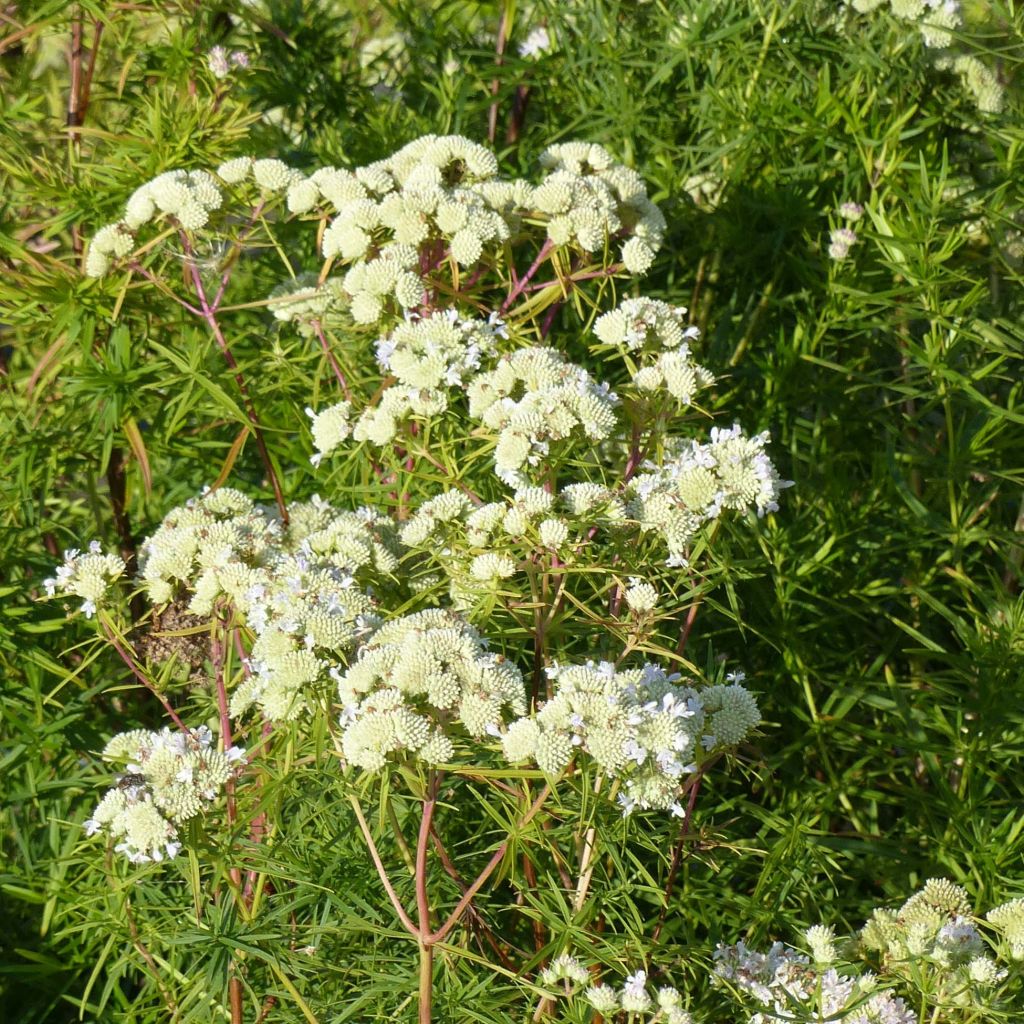

Pycnanthemum flexuosum - Menthe des montagnes
Pycnanthemum flexuosum - Mountain Mint
Pycnanthemum flexuosum
Appalachian Mountain Mint, Wavy-leaf Mountain Mint
This item cannot be shipped to the selected country
Delivery charge from €5.90
More information
Schedule delivery date,
and select date in basket
This plant carries a 12 months recovery warranty
More information
We guarantee the quality of our plants for a full growing cycle, and will replace at our expense any plant that fails to recover under normal climatic and planting conditions.
From €5.90 for pickup delivery and €6.90 for home delivery
Express home delivery from €8.90.
Does this plant fit my garden?
Set up your Plantfit profile →
Description
The Pycnanthemum flexuosum is a highly aromatic American perennial that bears tightly packed white flowers at the top of tall upright stems in summer. Its mint-scented foliage turns beautiful shades of red in autumn. The plant prefers cool to moist, sandy and acidic soils, in either full sun or light shade.
The Appalachian Mint is native to the coastal plains of the United States, from Virginia to northern Florida, as well as westwards to Mississippi. It mainly grows on the edges of acidic wet meadows called pocosins, and peaty marshes, alongside pines, bald cypresses, and oaks. It belongs to the Lamiaceae family, which includes many ornamental plants loved by gardeners. In particular, its common name reminds us that it is a close relative of mints. Like them, Pycnanthemum's foliage (reminiscent of oregano) is aromatic, emitting a powerful and pleasant minty fragrance. Between June and September, depending on the conditions, it produces small white flowers (or very pale purple) at the tips of its tall quadrangular stems, forming dense heads called glomerules. These flowers are highly attractive to pollinators! Moreover, the elongated teeth of the calyx give the whole plant the appearance of a small silver hedgehog, adding to its decorative value. Under optimal conditions, the plant will reach a height of 60 to 90 cm (24 to 35in) with a diameter of 50 cm (20in). It spreads through short suckers, but much slower than its mint relatives. As temperatures cool in autumn, the deciduous foliage takes on beautiful reddish hues, further extending the plant's period of interest. The stems persist during part of the winter, and can be cut back to ground level before regrowth begins.
Due to its origins, Pycnanthemum flexuosum thrives in cool, even moist, but well-drained soils. It is quite hardy and prefers a sandy, neutral to acidic substrate in an open and warm location. Sun or light shade is therefore preferred. It is worth noting that, in its natural habitat, the plant is frequently subjected to brush fires. On the other hand, it tolerates long dry periods during the summer, as well as winter waterlogging. Given its strong fragrance, very few herbivores enjoy consuming its leaves.
To recreate a fresh and well-drained "American meadow" bed, it is a perfect match with plants such as Rudbeckia subtomentosa, Rudbeckia maxima, Monardes, or even Liatris spicata. Some grasses like Molinies, Andropogon gerardii, or Schizachyrium will bring a welcome lightness to the ensemble.
Report an error about the product description
Pycnanthemum flexuosum - Mountain Mint in pictures


Flowering
Foliage
Plant habit
Botanical data
Pycnanthemum
flexuosum
Lamiaceae
Appalachian Mountain Mint, Wavy-leaf Mountain Mint
North America
Other Herb perennials
Planting and care
Mountain Mint is planted in open ground in spring or autumn, in a regular but well-drained soil, not too dry but rather moist. This plant does not tolerate stagnant humidity but poorly tolerates prolonged periods of drought. Plant it in a sunny location, or at worst in partial shade. This plant has few enemies and pests, except sometimes attacks of rust in humid conditions. Propagation is done by sowing or by dividing the clumps.
Planting period
Intended location
Care
This item has not been reviewed yet - be the first to leave a review about it.
Summer flowering perennials
Haven't found what you were looking for?
Hardiness is the lowest winter temperature a plant can endure without suffering serious damage or even dying. However, hardiness is affected by location (a sheltered area, such as a patio), protection (winter cover) and soil type (hardiness is improved by well-drained soil).

Photo Sharing Terms & Conditions
In order to encourage gardeners to interact and share their experiences, Promesse de fleurs offers various media enabling content to be uploaded onto its Site - in particular via the ‘Photo sharing’ module.
The User agrees to refrain from:
- Posting any content that is illegal, prejudicial, insulting, racist, inciteful to hatred, revisionist, contrary to public decency, that infringes on privacy or on the privacy rights of third parties, in particular the publicity rights of persons and goods, intellectual property rights, or the right to privacy.
- Submitting content on behalf of a third party;
- Impersonate the identity of a third party and/or publish any personal information about a third party;
In general, the User undertakes to refrain from any unethical behaviour.
All Content (in particular text, comments, files, images, photos, videos, creative works, etc.), which may be subject to property or intellectual property rights, image or other private rights, shall remain the property of the User, subject to the limited rights granted by the terms of the licence granted by Promesse de fleurs as stated below. Users are at liberty to publish or not to publish such Content on the Site, notably via the ‘Photo Sharing’ facility, and accept that this Content shall be made public and freely accessible, notably on the Internet.
Users further acknowledge, undertake to have ,and guarantee that they hold all necessary rights and permissions to publish such material on the Site, in particular with regard to the legislation in force pertaining to any privacy, property, intellectual property, image, or contractual rights, or rights of any other nature. By publishing such Content on the Site, Users acknowledge accepting full liability as publishers of the Content within the meaning of the law, and grant Promesse de fleurs, free of charge, an inclusive, worldwide licence for the said Content for the entire duration of its publication, including all reproduction, representation, up/downloading, displaying, performing, transmission, and storage rights.
Users also grant permission for their name to be linked to the Content and accept that this link may not always be made available.
By engaging in posting material, Users consent to their Content becoming automatically accessible on the Internet, in particular on other sites and/or blogs and/or web pages of the Promesse de fleurs site, including in particular social pages and the Promesse de fleurs catalogue.
Users may secure the removal of entrusted content free of charge by issuing a simple request via our contact form.
The flowering period indicated on our website applies to countries and regions located in USDA zone 8 (France, the United Kingdom, Ireland, the Netherlands, etc.)
It will vary according to where you live:
- In zones 9 to 10 (Italy, Spain, Greece, etc.), flowering will occur about 2 to 4 weeks earlier.
- In zones 6 to 7 (Germany, Poland, Slovenia, and lower mountainous regions), flowering will be delayed by 2 to 3 weeks.
- In zone 5 (Central Europe, Scandinavia), blooming will be delayed by 3 to 5 weeks.
In temperate climates, pruning of spring-flowering shrubs (forsythia, spireas, etc.) should be done just after flowering.
Pruning of summer-flowering shrubs (Indian Lilac, Perovskia, etc.) can be done in winter or spring.
In cold regions as well as with frost-sensitive plants, avoid pruning too early when severe frosts may still occur.
The planting period indicated on our website applies to countries and regions located in USDA zone 8 (France, United Kingdom, Ireland, Netherlands).
It will vary according to where you live:
- In Mediterranean zones (Marseille, Madrid, Milan, etc.), autumn and winter are the best planting periods.
- In continental zones (Strasbourg, Munich, Vienna, etc.), delay planting by 2 to 3 weeks in spring and bring it forward by 2 to 4 weeks in autumn.
- In mountainous regions (the Alps, Pyrenees, Carpathians, etc.), it is best to plant in late spring (May-June) or late summer (August-September).
The harvesting period indicated on our website applies to countries and regions in USDA zone 8 (France, England, Ireland, the Netherlands).
In colder areas (Scandinavia, Poland, Austria...) fruit and vegetable harvests are likely to be delayed by 3-4 weeks.
In warmer areas (Italy, Spain, Greece, etc.), harvesting will probably take place earlier, depending on weather conditions.
The sowing periods indicated on our website apply to countries and regions within USDA Zone 8 (France, UK, Ireland, Netherlands).
In colder areas (Scandinavia, Poland, Austria...), delay any outdoor sowing by 3-4 weeks, or sow under glass.
In warmer climes (Italy, Spain, Greece, etc.), bring outdoor sowing forward by a few weeks.

































